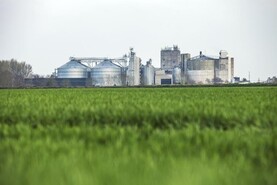The rules laid in this article show just how regulated the tillage sector is. The list is long and shows how restricted tillage farmers currently are on their own farms.
Under the last CAP, tillage farmers were really the only ones who noticed greening with the crop diversification requirements (three-crop rule).
Under the new CAP, these farmers face even further regulations, from Eco-schemes to cross-compliance.
Land management
Tillage farmers, to a certain extent, have very little control on how they manage their land. They must sow at least two or three crops. They must have a different crop in their field for at least one year in four.
They must keep a buffer on fields. They must cultivate stubbles in a short window at a busy time of the year. They must not spray on land they don’t cultivate until 1 February. And all the while, they are the farmers who are losing most on convergence under the new CAP.
Tillage is the sector that the Government says it wants to increase area in. The minister wants to support the sector. Yet, for all the good things tillage farmers do, and all the rules they comply with, they are not being rewarded.
Some of these rules can be argued as “good rules”. The three-crop rule has encouraged more break crops, but it has also meant that some farmers cannot maximise the crop that will make them the most money.
But as you delve further into the rules, they can lead to poor management and are a cause for serious frustration among farmers.
Cultivating stubbles within 10 days of harvest is not good practice. Cultivating stubbles as soon as possible after harvest in appropriate weather conditions is good practice.
But forcing farmers out to a mucky field, or an extremely dry field, as has happened in the past two years, is bad practice. In short, bad practice is being forced on farmers by the Department.
Inequality
Leaving a 3m uncultivated buffer on tillage farms beside a watercourse is a cause for inequality in Irish agriculture.
Farmers left this buffer beside drains on farms that do not carry water for much of the year in many cases in case of a penalty.
This has led to a large percentage of their farms being lost. On a 10ac field (200mX200m) with a drain on two sides, that means the farmer loses one third of an acre to a buffer zone, equating to about 1t of spring barley at average yields. Yield and income are reduced.
In the meantime, on livestock farms, animals can walk into the watercourse. On farms with a grassland stocking rate of over 170kg N /ha (derogation farms or farms exporting slurry or taking short term grazing to remove themselves from the derogation requirement) they only need to fence 1.5m away from the top of the bank.
Why is this inequality happening so blatantly in Irish agriculture?






 This is a subscriber-only article
This is a subscriber-only article










SHARING OPTIONS: